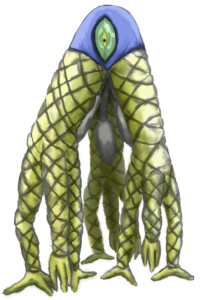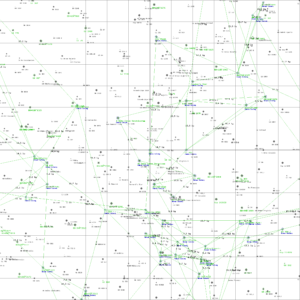RPGs are often designed for the expert player’s experience. An RPG game designer is likely to have had many experiences playing games and already has a concept of how the game “should” work. It would be great to see a board game designer who has no experience with RPGs be asked to make one. A game for beginners by a beginner that knows how to make a game, just not “our” game.
The reason I find that situation intriguing is that it would seem like it would produce a game that is much more beginner friendly. It would probably ignore ideas that an experienced RPG designer would think of as important. Like knocking out chunks of DNA and seeing what happens to an organism, we could learn immeasurable lessons about what it takes to make an RPG.
So what are things that you find in almost every RPG? Character sheets come to mind. What if you didn’t have them? How would you track who your character is and what they can do? Cards might be a way of keeping track of who your character is. Simple things like a special ability or equipment. Maybe if there were only a few attributes, you could simply remember what your character could do? Would a board game designer even use attributes?
I think it’s fairly obvious that a board game designer would not have a big beefy game book. If anything, they might make some kind of board for tracking game states. Things like hit points, would easily be managed by on a board with tokens. If you want a record of a game that’s interrupted, take a picture of the board.
Things like initiative might not even come to mind or if they did, might not show up like we’re used to. Either you take turns in the order you sit around the table, or it might be tracked on a board by how many rolls you’ve made in something like a racetrack.
Although most game makers would be familiar with the idea of experience points from things like video games, someone who was truly starting fresh would probably not come up with that idea. It’s more likely that if there was some kind of advancement, that you’d draw from a reward deck. As that deck depleted, the chances of advancement reduce because the player’s keep the advancement cards while the other rewards cycle in and out of the deck. This would also cap the total possible advancement so you don’t see overpowered characters. It would require a very large reward deck though.
Now, what about a “win” state? Most games have some kind of an end state that tells you that you’ve won. RPGs don’t do well with that because they’re supposed to be open ended. I’ve seen “arena world” RPGs that no one wants to play because there’s not enough of a story to them. They have a clear goal and a clear win state, but it’s not interesting. What if each player got a card that said what their “win” state was? Maybe the character is retired after that? Maybe the “win” is that you get to take one of the reward cards?
What about for the GM? Maybe the game board would track enemies in very simple terms. Maybe the game board also acts as a kind of random encounter table for generating games on the fly.
The real question is story, and how is it treated? I think there needs to be a specific world for the players to act in. A universal game engine is not beginner friendly because it’s not specific enough for the GM or even the players. It has to be open enough so that each player can pursue their own interests, but the main way to get what you want is usually via one path (traditionally this is slaying monsters). This also has to be communicated quickly and simply.
I’d like to make a free version of this game. A game tracking piece of paper for 1 to 4 players (if you have more players, print off another page). A printable deck of cards (printable decks are not my favorite, but it’s a workable solution). A small game book, under four pages describing how to play. A boxed version of this game would be a nice upgrade.


